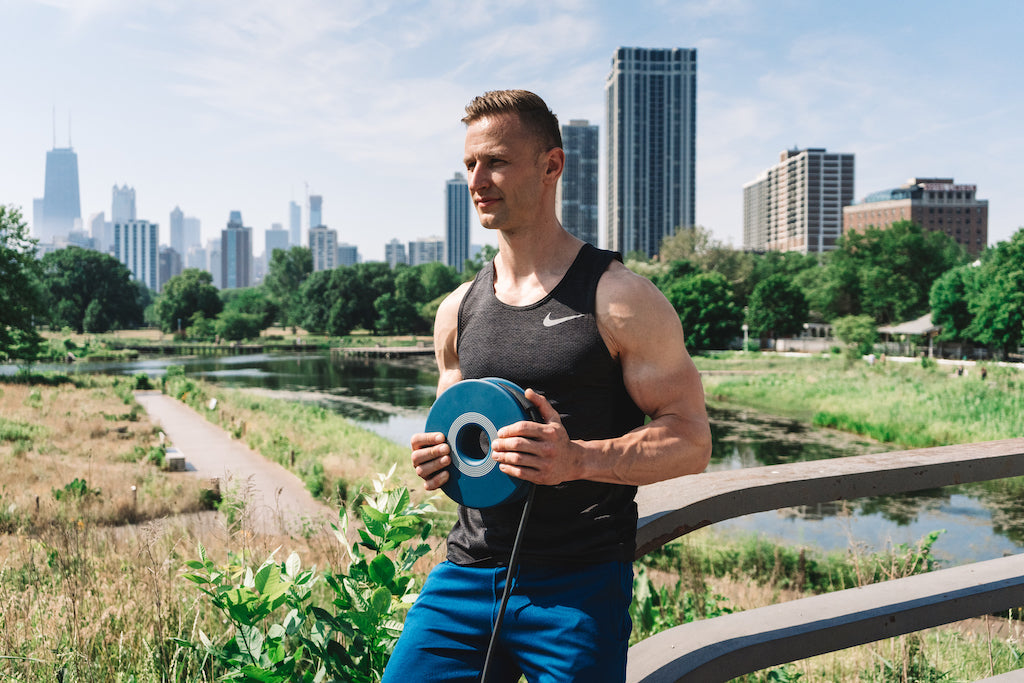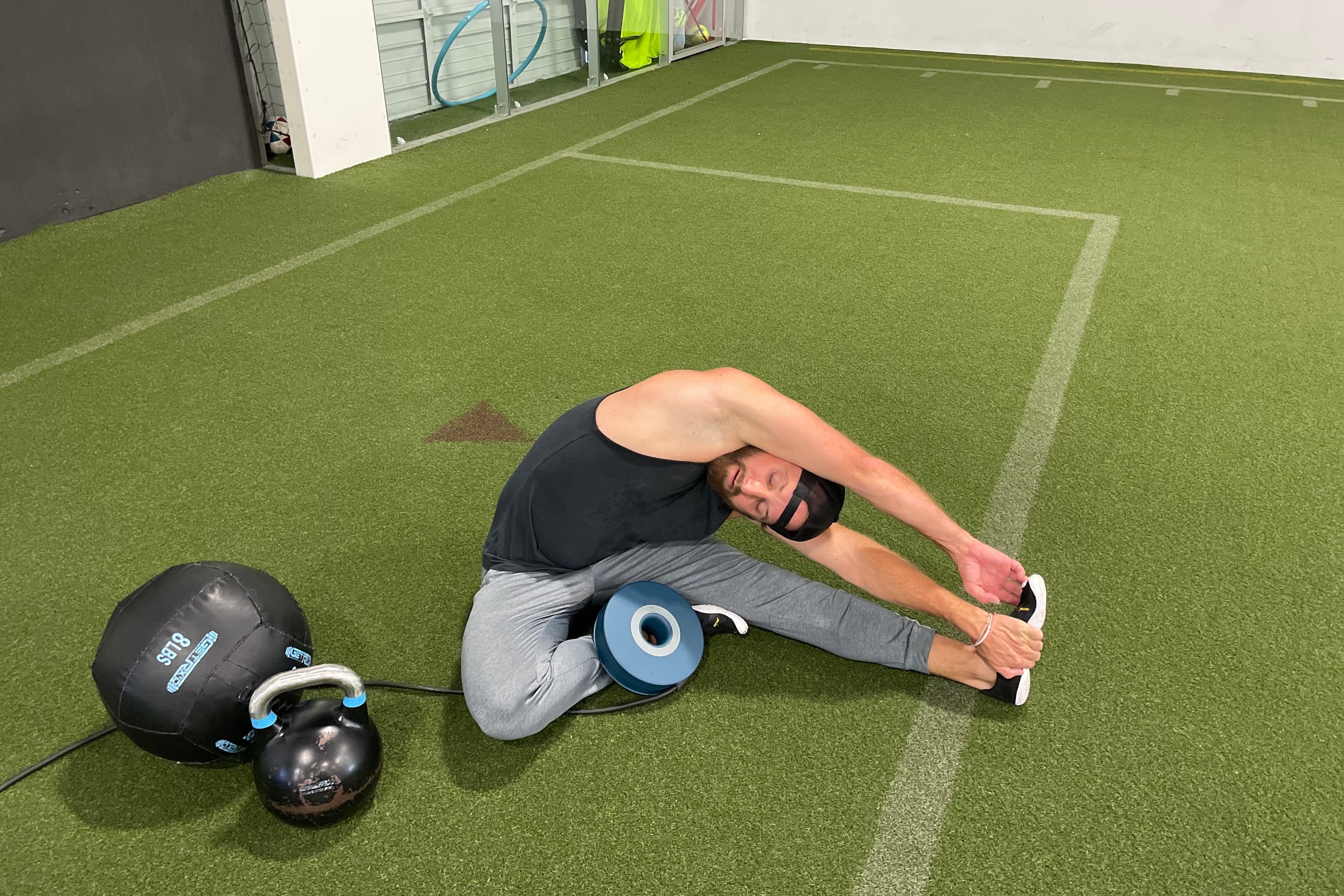At HAELO, we work with pro athletes to optimize their recovery and performance. Our partners include Olympic gold medalists and World Cup competitors.
All of the elite athletes we work with say the same thing: training is about more than pushing your body. You also have to recover properly.
Recovery prevents injury. It helps you get faster results in the gym—more muscle growth, strength, and speed—and it keeps you both physically and mentally balanced. In short, recovery is essential. If you want to perform at your best, you have to take care of your body and make sure it recovers properly.
Here’s some insight into how athletes recover at a professional level, and how you can mimic their recovery routines at home to get the most out of your training.
5 Ways to Recover Like a Pro Athlete
For pro athletes, recovery is a daily practice. It starts right after training and continues throughout the day.
Of course, you may not have the time to recover for a couple hours every single day. But with these 5 steps, you can get pro-level recovery in a shortened amount of time.
Give this protocol a try; you’ll see a major difference in your training effectiveness and the speed at which you progress.
Cold Therapy
You’ve likely seen photos of athletes taking ice baths to recover. There’s a good reason they do it: cold therapy is one of the biggest ways to stimulate muscle recovery.
When you exercise, your muscles build up metabolic waste as a result of their hard work—including lactic acid, which breaks down into hydrogen ions and causes muscle soreness.
When you expose your muscles to cold, they clear out hydrogen faster, rapidly decreasing muscle soreness[*][*].
Cold exposure also briefly reduces blood flow to your muscles. It sounds counterintuitive, but the change in local blood pressure decreases inflammation and actually helps your muscles recover faster[*].
You have a few options when it comes to cold therapy. Three good choices include:
- Ice baths
- Cryotherapy
- Icing (with an ice pack)
Ice baths are your best option, but if you don’t have easy access to an ice bath, regular icing also works well.
Massage
A 2018 review found that deep-tissue massage is the single most effective way to enhance muscle recovery[*]. If you’re training hard, it may be worth investing in a weekly massage.
Alternatively, you can get a similar muscle release with a foam roller and a lacrosse ball. Digging into tight muscles releases tension and restores range of motion, which both prevents injury and helps repair your muscles more quickly.
Hydration
Drinking water is so basic that a lot of people seem to forget it. But it has a much larger effect on muscle performance and recovery than most of us realize.
A 2015 review found that going into a workout slightly dehydrated decreased muscle endurance by 8.3%[*]. Muscle strength also fell by 5.5%.
Make it a habit to drink plenty of water throughout the day, especially if you’re working out consistently. It’s a low-effort way to get major returns on your recovery and performance.
Nervous System Recovery
Training isn’t just hard on your body—it’s also hard on your brain.
Intense exercise fatigues your central nervous system (CNS), depleting neurotransmitters that affect motivation and decreasing the signals that drive your muscles to work[*][*][*].
Over time, your nervous system adapts to exercise the same way your muscles do—it becomes stronger and more efficient[*]—but it needs rest in order to recover properly.
Your CNS only stays fatigued for a few hours after low-intensity exercise like jogging[*]. But high-intensity exercise like sprints, HIIT training, or heavy lifting leads to a decrease in CNS-driven muscle function for about 72 hours[*].
To optimize your physical performance, use one of the following tools to enhance nervous system recovery:
- Meditation helps restore post-workout CNS function faster[*]. Try a meditation app, or just sit quietly and focus on your breath for 5-10 minutes every morning.
- Deep sleep also speeds up CNS recovery. Try taking 1 mg of melatonin and 400 mg of magnesium glycinate an hour before bed—both of them improve sleep quality[*][*]
HAELO
HAELO is the gold standard for physical and mental recovery. There’s a reason more and more pro athletes are using it—you can use HAELO for everything from decreased muscle fatigue to better endurance to deeper sleep.
HAELO is a powerful new approach to pulsed electromagnetic field (PEMF) therapy. It sends pulses of electromagnetic force through your body, gently stimulating your cells and making them more efficient.
Recent research has found that PEMF therapy causes a significant decrease in muscle soreness[*][*], and a 2020 review found that PEMF decreases joint stiffness and improves joint mobility[*].
Finally, a 2021 study found that when athletes used HAELO devices every day, they saw[*]:
- 18% more deep sleep
- 11% better sleep efficiency
- 5% increase in long-term cardiovascular performance
- 11% increase in overall physical recovery
HAELO is an invaluable addition to your recovery protocol. It provides gentle stimulation that can help your body restore itself faster and perform at its peak.
The best way to understand HAELO’s power is to try it for yourself. That’s why we offer a 30-day return policy on every HAELO unit—so you can experience HAELO for a full two months and see how much it enhances your physical performance.
Final Thoughts
Recovery is an essential part of training. If you want to perform at your peak, you have to restore and repair both your body and mind.
Each of these strategies will help you recover from your workouts and reach your performance goals faster. Give them a try and see which ones work best for you.
Recover Stronger.


